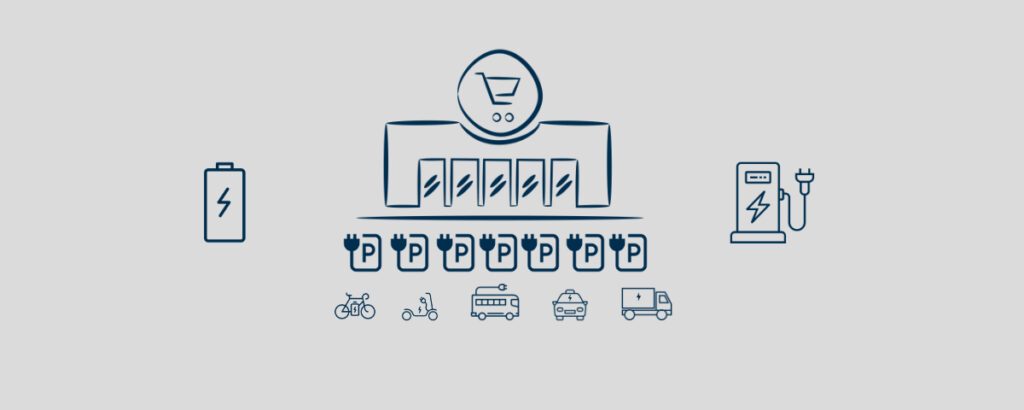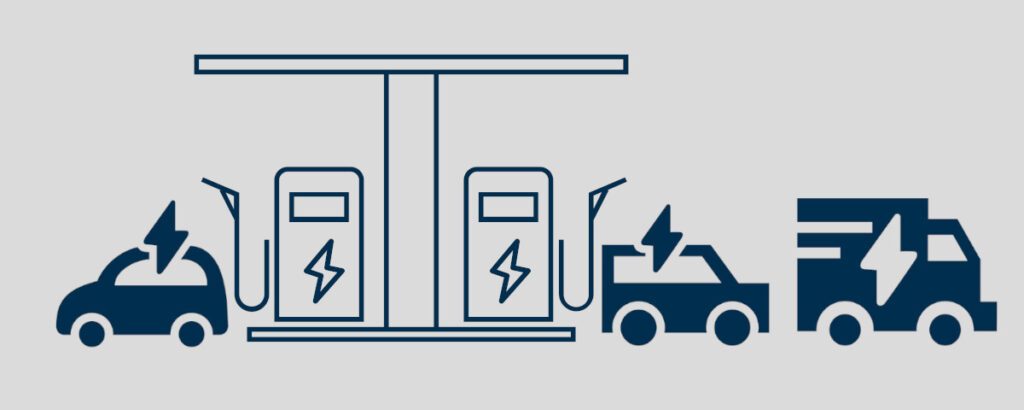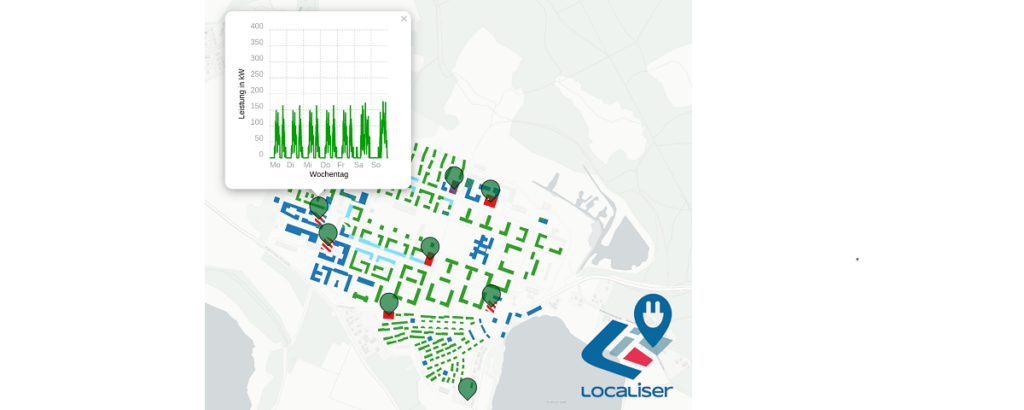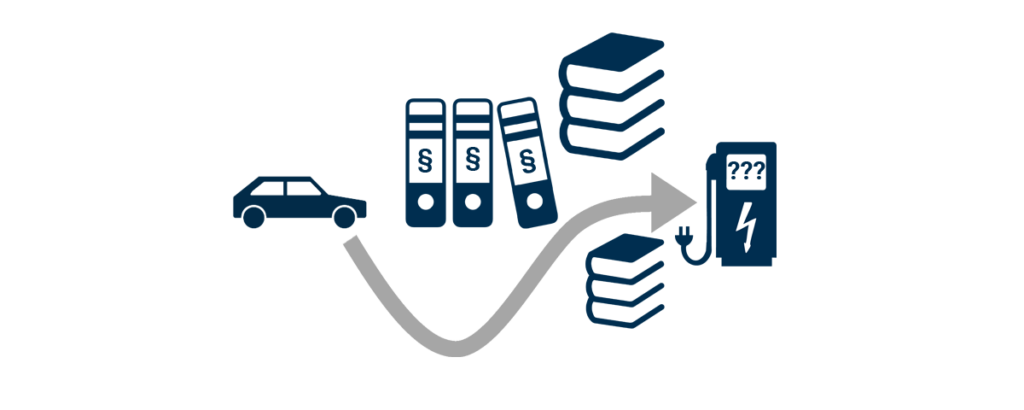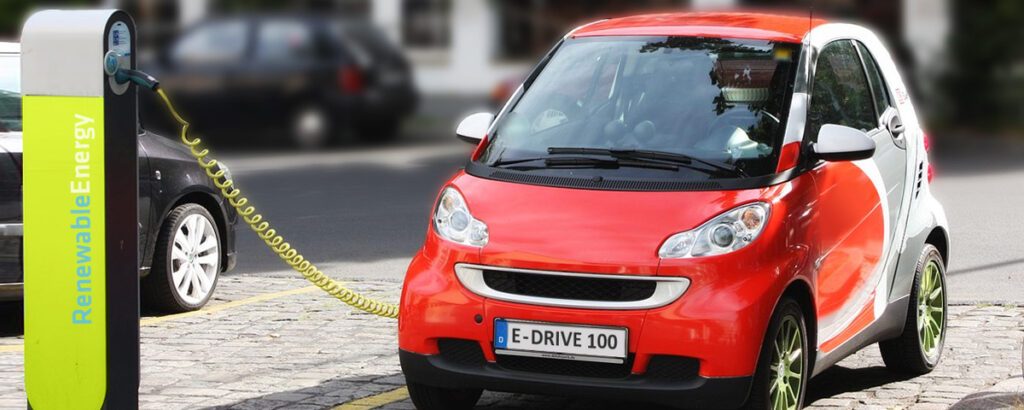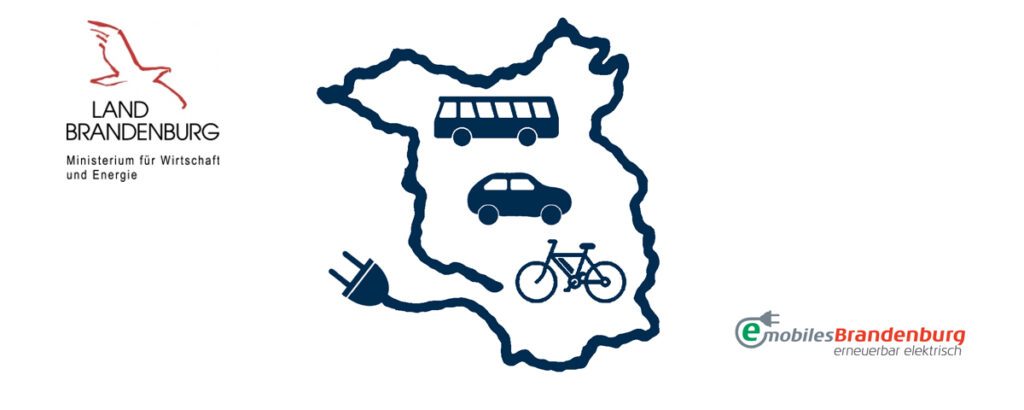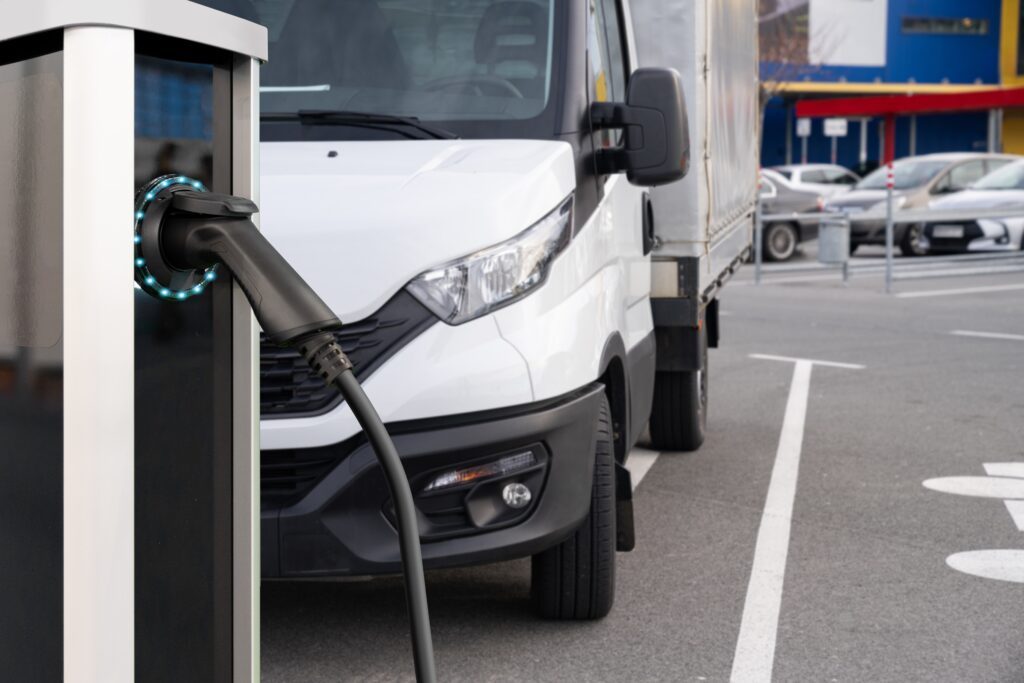
Charging Infrastructure
An important success factor of transport transition to e-mobility is the expansion of charging infrastructure. In order to achieve the target set by the German government, which has been in power since 2021, of around 15 million registered e-vehicles in Germany by 2030, municipalities, companies and private individuals will have to build charging infrastructure on a large scale – and the processes for doing so are often lengthy and costly. Efficient planning can make them shorter and more cost-effective.
How the Reiner Lemoine Institute helps
For this purpose, the RLI has developed software solutions that help especially with the optimized positioning of charging points and their dimensioning. Whether slow charging at your own front door or fast charging at the supermarket – all locations are important. In addition, RLI is investigating charging needs regarding different locations and the mutual interactions. These findings help to develop an overall charging infrastructure system that meets the requirements of e-mobility and the needs of its users, while at the same time conserving resources.
The development of charging infrastructure can place a heavy local burden on power grids. RLI is also investigating the impact of e-mobility on power grids depending on the e-vehicles’ market ramp-up at the local level (see also grid integration). Using the institute’s software solutions, RLI scientists can identify selective grid loads and develop strategies for integrating e-mobility into the power grid. For specific issues of charging infrastructure planning, we also collaborate with RLI spin-off software company Localiser.
Contact
Tools
SpiceEV
The tool was developed by researchers at the RLI and helps compare different charging strategies and create load profiles for charging stations at a grid connection point.
Example projects
Update of the study “Charging Infrastructure after 2025/2030: Scenarios for the Market Takeoff”





